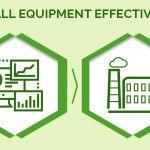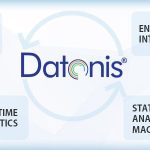How Industrial IoT is Reshaping Future Organization Structures

Highlights
- Typical organization structure in a smart factory found hierarchical & rigid
- Middle management spends time & collating &presentation of production data:: No true source
- Digital transformation & Performance Management very difficult to ascertain
- Adapting Industrial IoT can enable Real-time data on critical parameters around the plant as well as single source of truth
- Leads to a flat, revamped organization structure with adaptive and responsive workforce powered by data enabling rapid digital transformation for Industry 4.0
Flat organizations, empowered workforce, supervisor less factories, adaptive and responsive workforce. We have heard these jargons thrown around for more than a decade. Manufacturing plants have seen centralized, de-centralized, matrix organizations and many different types of complex structures to convert their plant’s vision into reality.
Current Manufacturing Organization Structures – Challenges
Typical organization structure of a medium to large scale manufacturing plant still looks like the one shown in figure below.
- The Position Descriptions (PDs) and Job Descriptions (JDs) are rarely updated and not at all dynamic in nature.
- Shop floor to top floor haziness – Most of the middle layers (supervisors to certain levels of managers) of the organization are engaged in monitoring of process, equipment, collecting data, fundamental analysis of data and then presenting data it to top management. There is significant data loss and true facts on the floor are mispresented for business decision making.
- With continuous improvements and technology upgrades, the expected benefits of the INVESTMENT are rarely accrued, with no change in working practices and organizations hierarchies.
- Most of the Engineering / Technical positions end up doing co-ordination and management instead core ENGINEERING work.
- Performance Measurement still remains a very obscure process with very little objectivity and hardly any real time KPI monitoring and alerts in case of deviations from expectations.
- The inherent inertia in the organization structures makes transformations very slow and often damp squib.
- Significant amount of organizations time and resources are spent in POST MORTEM of the losses in operations.
Typical Indicative Manufacturing Organization Structure For Relevant Functions
Why does the Industrial Internet of Things matter?
Industrial Internet of Things (IIoT) is a culmination of advances in sensors, machines, the rise of cloud computing and advances in big data analytics. It has made connecting heterogeneous systems and machines simpler. It has made processing the ever-increasing volume of data from machines possible. The IIoT platform can act as the single repository for machine data generated across all your plants. This information can be analyzed to compute
- Real time operational effectiveness (OEE) and alerts based on downtimes
- Real time quality and SPC – alerts on out of bounds process variance
- Real time condition base monitoring of maintenance of equipment
- Predictive maintenance using advanced data analytics and machine learning
- Real-time energy and other critical utilities monitoring and alerts
How does a future IoT-enabled smart organization look like?
Appropriately adopting Industrial IoT and its strengths will set the stage for a revamped and flat organization structure as envisaged by many, decades ago. Emphasis will be on becoming an Engineer again and focus limited management bandwidth on real high priority problem solving. It will enable the age of super specialization where people with special skills (engineers, data scientists, design specialists, etc.) shall end up applying their core skills and spend significant amount of their daily time on identifying and solving problems and very limited time on monotonous and menial tasks. Adopting IoT will enable Management by exception and not Management of Everything as most of us end up doing today on the shopfloors.
Some attributes of an IoT enabled future smart organization are indicated below.
- Empowered work force reporting directly to top layers of management
- Only 2 to 3 layers of Management reporting
- Special positions like engineers, designers, data scientist, maintenance technicians, process improvement experts playing a STAFF function in the organization and cutting across products and cell groups
- Management by exception
- Online operational reviews with single source of truth established by the IoT platform
- Objective KPIs monitoring and analysis (alarms raised, responsiveness to alarms and notifications from the shopfloor)
- Total revamped position and job descriptions apt for working in a smart factory setup
Indicative IoT-enabled future smart organization for relevant functions is envisaged in the figure below.
How can Altizon Help?
Altizon is an Industrial Internet of Things company focused on helping manufacturers drive value out of IoT, improve EBITDA and bring in significant cultural transformation on the floor. For gearing up your organisation for the future & usher in Industry 4.0, contact us at sales@altizon.com.



